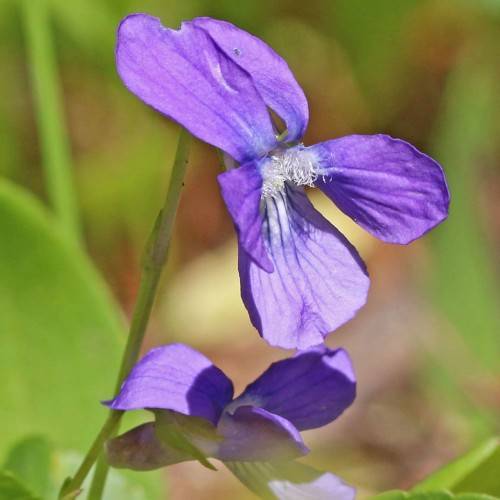
Early Blue Violet
Viola adunca
Cycle:
Perennial
Watering:
Average
Hardiness Zone:
Sun:
full sun,part sun/part shade
Soil:
Sandy,Loamy,Clay,Rocky
Leaf:
Yes
Growth Rate:
Low
Drought Tolerant:
Yes
Thorny:
Yes
Invasive:
Yes
Care Level:
Moderate
watering
Early Blue Violets should be watered once a week to ensure that their soil remains consistently moist. Water deeply, about 1” inch per session, making sure that the entire root system is receiving moisture. Allow soil to dry in between waterings; do not allow the soil to become overly soggy. Water in the early morning hours to give the plant time to absorb the moisture and minimize any potential fungal issues.
sunlight
Early Blue Violets need full or partial sunlight for growth and blooming. These plants are native to the forest floor and the understory of trees, so they can handle partial sunlight. They will bloom best when exposed to dappled, filtered light that is not strong. Early Blue Violets need at least 6 to 8 hours of sunlight daily during their peak growing season. They will require some afternoon shade in direct sunlight areas during the hottest times of the day. During the colder months, they will tolerate less sunlight, so 2 to 4 hours of daily illumination should be enough.
pruning
Pruning your Early Blue Violet (Viola adunca) is important for maintaining a healthy and attractive looking plant. Prune the plant lightly about once a year in the spring or early summer after the last frost has passed but before the arrival of the hot summer months. Trim off the dead or diseased foliage and faded flowers, as well as any stems or leaves that have become leggy or outgrown their space. Do not trim away more than 1-third of the total foliage. If a more drastic pruning is necessary, perform the pruning in 2 stages, over 2 years.
